End of Nations Preview: The World at War
The teams behind Rift and Command and Conquer prepare the RTS MMO.
There's a strange thing in the End of Nations map I'm trying out, and that thing is a suspension railway. How quaint. The global economy has collapsed, the world is at war and all its major cities lie in ruin, yet as I send my troops into battle I can clearly see there's still a suspension railway trundling its way about this town I'm trying to occupy, casually weaving a route through the demolished buildings and over the cratered streets.
If there's anyone in any of its carriages, then they have a superb view of the fighting. Tanks the size of houses cascade down the main road like a tide of liquid metal, armoured infantry bounding along beside them. Low in the sky, a pair of trigger-happy helicopters launch ordinance liberally into the town square. Following the streaks of their missiles, it might just be possible to catch sight of the rocket launchers they fire at.
Then again, this sight might have become all too familiar for any passengers or commuters travelling by. Battles like this are raging across every continent, all day and every day. Generals come and go as they please, territories change hands by the hour and this regional skirmish might well be overshadowed by others nearby, battles where dozens of commanders could be hurling their troops into a massive melee. With all this war going on, it may be a struggle to find anything interesting to read in the morning metro paper.
This is the world of End of Nations, a massively multiplayer RTS where battlefields come under the gaze of dozens of commanders divided into two teams, each individually directing their own detachments while (hopefully) working together to out-think and outmanoeuvre their enemies. Depending upon how intense they want their battles to be, they can opt to join larger conflicts of up to 56 players, or perhaps even dip into a solo game.
Even the largest of these battles are but one part of a global conflict. When players aren't watching their units trundle across the broken cities of the near future, they can browse a metagame map screen to see how their efforts have tilted the balance of world power. From here, there are many more battlefields to choose from, each of them tied to a region that changes hands according to the successes or failures of those who have fought across them.
End of Nations marries the talents of Petroglyph Games and Trion Worlds. The former includes many Westwood Studios veterans, real-time strategy developers who can trace a history all the way back to Dune II: Battle for Arrakis, while Trion's focus is on finely-crafted MMO games, with Rift winning critical acclaim and two awards at GDC last year.
Rift spent over four years in development and Chris Lena, senior producer at Trion, explains how End of Nations is also being very carefully constructed. Even after two years of development, and with the game's RTS engine working very well, a great many specifics are yet to be decided upon. End of Nations will be rolled out in stages to test these, with a closed beta this spring.
"Then in summer we're doing something we call PvP Preview," says Lena. "This is kind of an open beta. We're going to be releasing a bunch of PvP maps, and we'll have a tutorial with pretty much all the classes and units. We're not releasing our co-op campaign until the autumn." This main campaign is more akin to what Lena calls a "boxed RTS game," where you can expect to play through a series of plot-driven battles with your friends if you fancy avoiding the ongoing online conflict. In all these aspects, the game will be free-to-play.
How the metagame will play and, critically, how this will cause the game to balance itself, remains the most crucial development consideration. Balance is the concept that Lena keeps returning to, giving an example of how he doesn't want a team's failure in one battle to further punish them as they start their next. "We always want to make sure it's fair, so we're a little hesitant to include bonuses. We're still playing with the values, even how many wins it will take, the certain number of battles to make that territory neutral again, and then flip." This will prevent a faction from losing ground right away simply because a few players suffered an unlucky defeat, and also prevent runaway victories, where one faction gains too much momentum.
The entire planet will be turned into a gruesome canvas across which players can paint the conflicts they like thanks to many map types. As well as accommodating different numbers of players, these offer different modes of play, such as domination, offensive or defensive scenarios, traditional base-versus-base battles and a survival mode.
Incorporating these more cohesively into the metagame's narrative is one of the current goals of the team. "We have some modes that are attacker or defender," says Lena, "So we might make it so that the winning [holding] faction on a map is always the defender, the other faction is the attacker, as long as it's always an even playing field."
At present, he says, there is also a plan to split End of Nations across many server shards, and for each metagame to have a fixed length. "It'll run in sessions. After two or three months, we're not sure about the time, there'll actually be a winning faction declared and we'll restart it again."
Although Petroglyph's team includes such luminaries as Joe Bostic, the co-designer of Dune II, End of Nations does not want to follow older genre conventions and Lena says that, by and large, "This is not a base-building RTS." Instead, players will gradually purchase, train and customise their own collections of units, deploying some of these whenever they go into combat. Destroyed units are not lost and can be bought back mid-battle as long as the player has enough resources to hand, resources gained by controlling key areas of a map.
It would be well worth players diversifying as soon as possible, as there's a strong emphasis on a rock/paper/scissors style of combat and particular units are shockingly effective (or vulnerable) against certain others. After playing through early builds of both a 1v1 survival map and a 4v4 domination map, I was able to see exactly how weak and how stoic my infantry could be, depending on what they fought.
As polished and entertaining as my experience was, 4v4 is nothing all that remarkable for a modern RTS and it remains to be seen how the much larger maps will work, even if a player can feel they are making much of a difference as just one commander in a battle of over fifty. Of course, End of Nations's success will also be dependent on how well it integrates its already polished RTS maps with its metagame. This will determine whether players can effectively co-ordinate their wider efforts and gain satisfaction from fighting many battles in many regions with many different teammates.
By integrating the strategic and the tactical on this kind of scale, the game is attempting something that's never been tried before. It could feel like a true world war, or it could simply end up about as coherent as gigantic scrum. Right now, it's as if I've only had a glimpse from the suspension railway, but I liked what I saw.


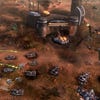

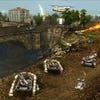


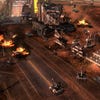


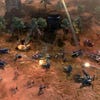

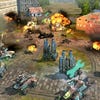
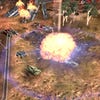
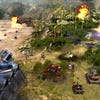


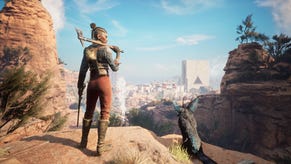



.png?width=291&height=164&fit=crop&quality=80&format=jpg&auto=webp)


